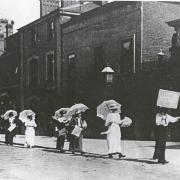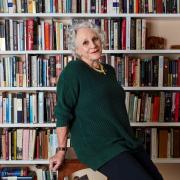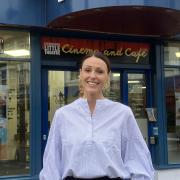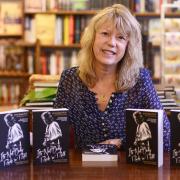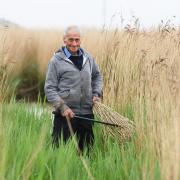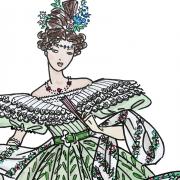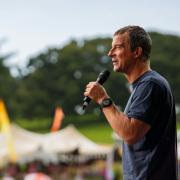As the Women’s Institute celebrates its 100th anniversary, Rachel Buller looks at its past, present and future in Norfolk.

While the world has changed so much since the Women’s Institute was formed 100 years ago, the core aims of this remarkable organisation remain largely the same.
This year, as celebrations for the WI’s national centenary begin, there will be events and exhibitions highlighting its role in Norfolk and further afield, from simple beginnings to its vibrant and exciting future.
The first WI in Britain was formed as the Agricultural Organisation Society (AOS) in 1915 as a way of encouraging women living in rural communities to help with the growing and preserving of food during the First World War to stave off shortages.
In 1916, the AOS set up a Women’s Institute sub-committee to oversee work and Lady Gertrude Denman was appointed chairman. By the end of the year, 40 WIs had opened.

It is now the largest voluntary women’s organisation in the UK, with around 212,000 members. In Norfolk alone there are 165 different groups with more than 5000 members.
PAST
This month marks the opening of a WI exhibition at Gressenhall Farm and Workhouse, near Dereham, going from its early rural wartime roots to the present day. Curator Megan Dennis says the archive is an amazing glimpse into an organisation whose reach and power goes far beyond people’s preconceptions.

“As I learned more about its history and all that it has achieved, I found my initial working title for the exhibition – Jam and Jerusalem – was all wrong and changed it to Inspiring Women – 100 years of the Women’s Institute. Its history is incredible and, even in its early years, it was surprisingly forward-thinking in terms of health, social and global issues. It has always been a powerful and positive force for change and a way for women to have their voices heard. That remains the same today.
“From its very early days, it was a keen supporter of rural healthcare, district nursing and the NHS. One of its current campaigns is supporting midwives and when you look back, it was campaigning for the same thing 50 years ago. In the 1950s, they looked at drug misuse among youngsters, which was incredibly ahead of its time. A lot of the members were mothers and, even 60 years ago, they didn’t want issues swept under the carpet.”
The WI’s role in the two world wars is a key part of the exhibition and there are some fascinating photographs detailing its work alongside the Land Army.
“The women set up a jam production centre in Norfolk during the war to help provide food, and members also knitted 9000 items for servicemen. It is absolutely amazing when you look at the figures and understand what they achieved. We have a potato basket in the exhibition which is a real symbol of what these women could make happen. They learned how to weave the baskets to hold potatoes so that with the men away, the Land Army could still bring in the harvest. It was an incredible effort and hugely successful.
“We all know the WI had baking competitions and cake sales but they do so much more than that. Back in the 1970s, they were already talking about genetically modified foods. It is the same as the associations with the WI and crafts. We have some absolutely amazing things on display, from a beautifully embroidered quilt made in the 1960s to a heron made from recycled oil drums shows off their welding skills.”
PRESENT
Meg Dorling is chairman of the membership advisory committee for Norfolk, as well as being a member of both Sporle and Swaffham Market Morning WIs.
“When the WI first started, it was specifically for rural communities during the wars, but it is increasingly attracting a wider age range in many different areas. We now have women in their 20s up to members in their 90s. The oldest Norfolk WIs still going today are at Hardingham and Hethersett and both go back to 1918, and we are opening new groups all the time. The picture is very vibrant in Norfolk.”
The newest group opened just last month in Swaffham and already has 40 members, illustrating a changing make-up of how different branches operate.
“The Swaffham Market Morning WI appeals to those who might not find it convenient in the evenings. Some like to catch the bus into town and combine it with shopping and lunch, but it is also equally popular with mums who have dropped little ones off at nursery.
“We found there was a real renewed interest in the WI when the recession bit. Our older members had lived through tough times before, they knew how to recycle, to knit and sew, cook and bake within a limited budget. The younger members really respect that and want to learn these traditional skills and that make do and mend culture has helped continue that interest. But the older members are learning new things as well. They can find out more about technology from the younger ones – whether it is learning to do their shopping online, send emails or use digital photography. Both ends of the age group have something valuable to give each other and that is an amazing thing. It has created wonderful relationships which might not have otherwise occurred.”
THE FUTURE
Wendy Adams is chairman of the Norfolk Federation, having joined Newton Flotman WI 15 years ago to make friends in the village.
“The WI offers what it always has. It’s an educational charity for women, it supports women in their community, provides friendship and support, and is about women enjoying themselves. But I think the biggest challenge is to show that we are still relevant to women today and hopefully we are succeeding. The image has been updated recently; we have magazines, websites and Facebook pages. It’s a fine balance between appealing to younger women without alienating some of the longer-standing members – and I don’t just mean the older members by this. Many of them really embrace the new technologies
“We still offer workshops, but instead of things like making baskets from the hedgerows, it’s button necklaces or running websites or setting up Facebook pages. There are more urban WIs now and lots of them meet in pubs, cafés or at work. We need to show the WI is far from being just about ‘jam and Jerusalem’, we campaign on a wide range of issues which are put forward by WI members. Current campaigns include talking about organ donation, more midwives, SOS for honeybees and saving high streets and town centres. The recent government initiative about not imprisoning those with mental health issues started from the WI Care not Custody campaign which was put forward by a Norfolk member.”
Be inspired
Inspiring Women: 100 years of the WI at Gressenhall Farm and Workhouse, runs from March 1 to November 1. Members will also be at Gressenhall from July 22 to 26 with displays and demonstrations.
The WI is playing a major role in this year’s Blickling Proms to mark the centenary, with Norfolk Federation Choir performing. Saturday, August 8, Blickling Estate, NR11 6NF; www.revival-productions.co.uk.
Why we love our WI
Haddiscoe and District WI started in 1974 and has 44 members, aged 35 to 94. “We throw a party annually for aged, isolated and infirm with lots of good food and entertainment,” says president Sylvia Haslett. “We have two craft groups, a book group, walking group and a darts team. We have retained our original ‘friendship and fun’ but added, not only new members, but a keener sense of communal responsibility. With each new committee our complexion changes subtlety, always, I’d like to think, for the overall good.”
Acle WI, running since 1978, meets in the evenings to accommodate working members.
“We are all members for many different reasons,” says president Frances Mobbs. “Be it urban or rural, the WI has been the lynchpin of community life and we are all committed to improve the quality of life for our members, their families and the wider community. The monthly meetings offer a diverse insight to all walks of life, via the speakers.”
Drayton WI was formed in September 1970 and has 48 members.
“Friendship is our number one priority,” says president Christine Marling. “Our members are assured of a warm welcome and we are very supportive of one another. The WI takes part in community events and our campaigns at national level have influenced government decisions. Every member has an opportunity to vote on these decisions.”
Dersingham Evening WI has 75 members and was established 55 years ago.
“We are very active in the community,” says president Gilly Spencer. “We deliver village and church magazines, help at day centres and support church and village activities. We also support local food banks, the women’s refuge, and our knitting group regularly sends things to the Norfolk Knitters, who pass then on to needy causes. Members feel free to comment and make suggestions - no longer is the president, the local Lady of the manor to be feared.”
To find a WI group near you, contact the Norfolk Federation of Women’s Institutes at Evelyn Suffield House, 45 All Saints Green, Norwich, NR1 3LY, on 01603 624580 or visit www.thewi.org.uk












